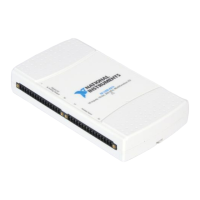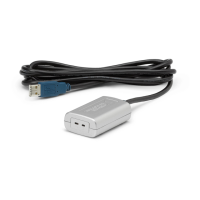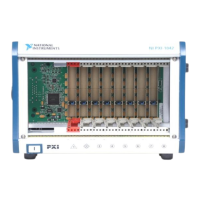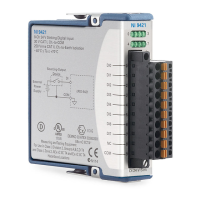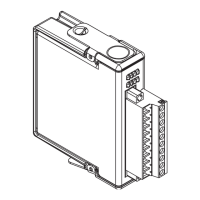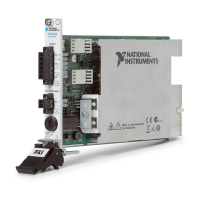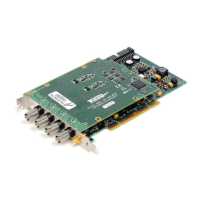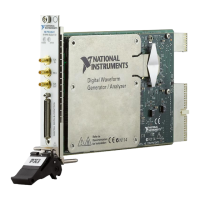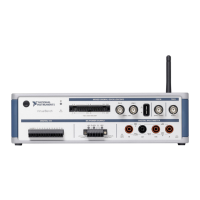Chapter 4 Analog Input
NI USB-621x User Manual 4-32 ni.com
The difference in ground potential between two instruments connected to
the same building power system is typically between 1 and 100 mV, but the
difference can be much higher if power distribution circuits are improperly
connected. If a grounded signal source is incorrectly measured, this
difference can appear as measurement error. Follow the connection
instructions for grounded signal sources to eliminate this ground potential
difference from the measured signal.
When to Use Differential Connections with
Ground-Referenced Signal Sources
Use differential input connections for any channel that meets any of the
following conditions:
• The input signal is low level (less than 1 V).
• The leads connecting the signal to the device are greater than 3 m
(10 ft).
• The input signal requires a separate ground-reference point or return
signal.
• The signal leads travel through noisy environments.
• Two analog input channels, AI+ and AI–, are available.
Differential signal connections reduce noise pickup and increase
common-mode noise rejection. Differential signal connections also allow
input signals to float within the common-mode limits of the NI-PGIA.
Refer to the Using Differential Connections for Ground-Referenced Signal
Sources section for more information about differential connections.
When to Use Non-Referenced Single-Ended
Connections with Ground-Referenced Signal
Sources
Only use non-referenced single-ended input connections if the input signal
meets the following conditions:
• The input signal is high-level (greater than 1 V).
• The leads connecting the signal to the device are less than 3 m (10 ft).
• The input signal can share a common reference point with other
signals.
Differential input connections are recommended for greater signal integrity
for any input signal that does not meet the preceding conditions.

